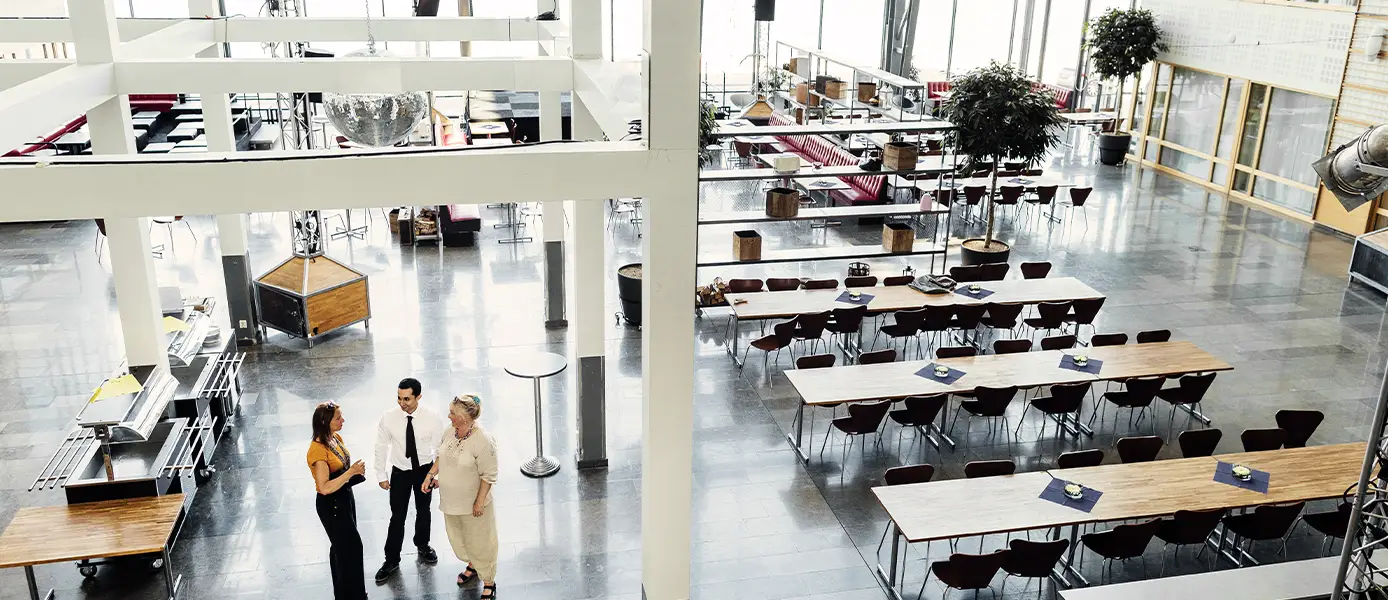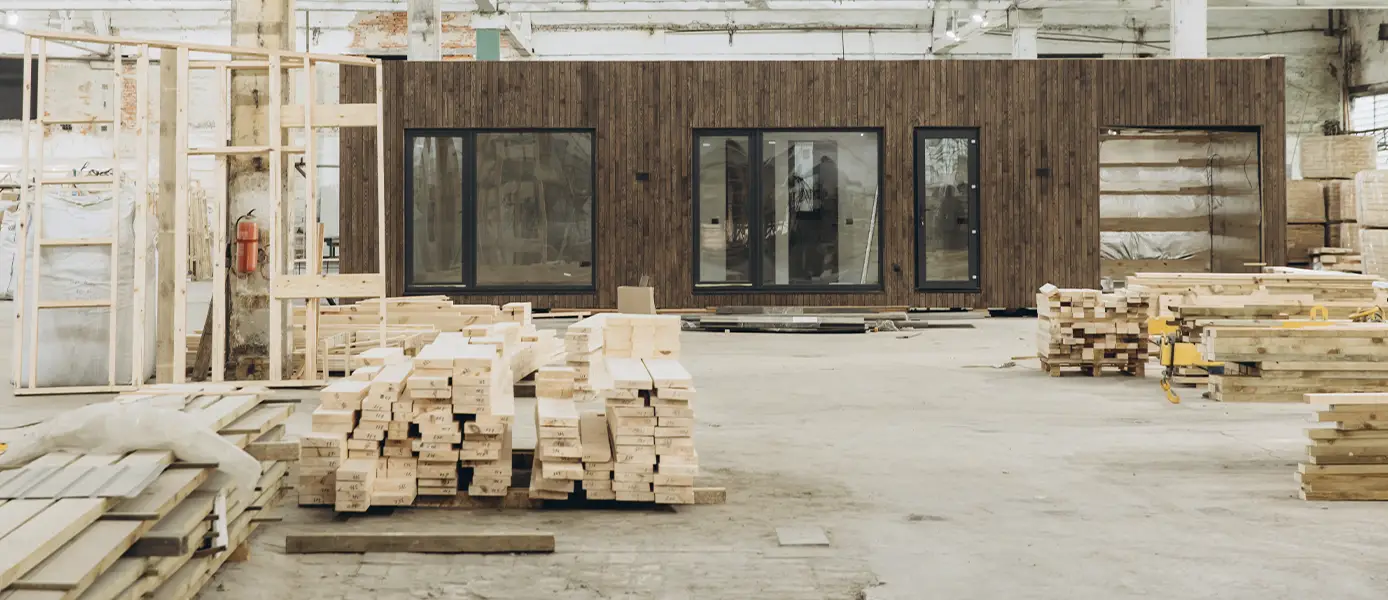The Covid-19 Pandemic has greatly changed the way people look through the corporate culture and workspace wellbeing on a global scale. A large number of people from different sectors were compelled to maintain a balance between work-life integration that is in line with mental health and physical wellbeing. The organizations have therefore incorporated different amnesties and settings that brings back the essence of wellbeing in workspace, catered by wellness-cantered workplace design. It focusses on developing an atmosphere that supports mental, emotional, and physical health in order to create a more contented, productive, and happy workforce.
Physical Attributes Improving the Wellness in Workspace
Bringing the Outdoors in with Biophilic Design
The goal of the Biophilic design is to bring the nature into the office. The examples include natural materials like wood and stone, water features, plants, and natural light. The research is always in accordance with the fact that spending time in nature can lower stress levels, elevate mood, and improve cognitive abilities. The modern advancements covers creating an indoor gardens or green walls, introduction of bio phallic designed furniture and adjusting the level of natural ventilation systems.
Considering Ergonomics in Design
In order to prevent physical strain and injury, ergonomics is essential. By offering ergonomic furniture and equipment, employers can lower the risk of musculoskeletal issues and assist staff in maintaining proper posture.
To guarantee that workers can work comfortably, spend money on monitor stands, ergonomic chairs, and adjustable desks. Encourage employees to take regular breaks and give them areas to move around and stretch.
Making Air Quality a Priority
People sometimes ignore the aspect of air quality in the workspace. Many health relates issues such as the headaches, exhaustion and various respiratory disorders can be lessened with the maintenance of air quality. Purchasing high-quality ventilation systems and air purifiers can have a big impact on employees’ health. Managing proper ventilation and adding natural plants that purifies the air can bring drastic positive outcome additionally enhancing the aesthetic sense with creating natural environment.
Natural Lighting
Another crucial factor in bringing the best productivity from the employees is the lightning. The natural lightning in the workspace environment helps elevates moods, lower chances of stress during work hours and strengthens productivity. A well maintained lightning can lessen the chances of headaches and eye strain encouraging the greater stamina of the employees.
Minimisation of Noise
The reduction in noise whether artificial or natural can directly impact the concentration and level of productivity of the employee. Noise can create stress thereby lowering the average performance. The modern corporate settings are being designed to cater the level of noise with materials that absorbs sounds and the introduction of quiet spaces.
A Comfortable Temperature
Temperature of the workspace sector can greatly impact the wellbeing of the employees. The focus on elements such as the like humidity and airflow, a wellness-cantered workplace design can alter the productivity levels. A comfortable temperature can provide comfort that enhance the efficacy of the workers but adjusting it is the core factor as too comfortable can make employees lazy in their tasks. Therefore, a moderate temperature provided at the workspace can greatly impact the wellbeing.
Including Technology to Promote Comfort
Making a workspace that is both comfortable and productive can be greatly aided by technology. To create the ideal working environment, smart office solutions can assist in controlling the lighting, temperature, and sound. Invest in occupancy sensors that regulate heating and cooling and smart lighting systems that change their settings according to the time of day. These innovations can lower energy expenses while improving comfort.
Social Factors Creating an Impact on Workspace Culture
Flexibility, Choice and Trust
Companies now understand that a significant portion of their employees, or possibly their whole workforce, might not ever show up for work five days a week. If job functions allow, it is anticipated that the majority of workers will work from home for a portion of their careers in the future. In order to meet changing organisational needs on a daily basis and maintain the distinctive culture of their businesses, many leaders are being prompted by this shift to embrace new, more adaptable managerial and operational models.
Businesses understand that every employee has a unique situation, and that if given the right management and careful communication, a choice (within reason) can bring out the best in a team or individual. As a result, astute employers are keeping an eye on health performance metrics in addition to their financial results in order to determine what is effective in their companies, spot areas for development, and modify policies, procedures, and management approaches as necessary.
Mindfulness and Relaxation Spaces
Workers have a place to rest in quiet rooms. Soft lighting and cosy seating are common features of these areas. Some choose to be extra quiet by using materials that reduce sound. The privacy of meditation pods allows for the practice of mindfulness. Apps for guided meditation or soothing nature sounds might be among them. Sleep pod-equipped nap rooms enable quick power naps. It can increase productivity in the afternoon. Throughout the day, employees can stretch and de-stress in yoga spaces.
Culture Reigns
In order to keep employees safe and productive during difficult times, astute leaders have gone to considerable measures to establish flexible policies, foster healthy work environments, improve benefit offerings, and use risk reduction tactics. Even though these steps have been effective in reaching short-term goals, many businesses are still worried about how their corporate cultures will be affected in the absence of the physical workspace, which frequently acts as a hub for teamwork.
Place-based solutions that allow people to collaborate and create in aesthetically pleasing, motivating, and healthy environments are essential for successful growth strategies. Design culture revolves around this. Through the use of technology, creative industries that have managed to survive the pandemic. However, the people have also missed the sparks of creativity and innovation that fly when people can work together in a common area and have felt the sting of our peers’ physical absence.
Long-Term Gains from Wellness Investments
Businesses that incorporate wellness into their office design reap a number of long-term rewards. These health-focused workplaces frequently see increases in employee retention and satisfaction. Offices that prioritise wellness tend to be more productive. This is partially because better physical and mental health resulted in lower absenteeism. Additionally, workers say they feel more creative and involved in these environments. Designing with wellness in mind can help businesses save money on healthcare. These workplaces may lower the prevalence of chronic illnesses among staff members by encouraging healthier lifestyles. This office design strategy is probably going to become more and more crucial for drawing in and keeping top talent.



